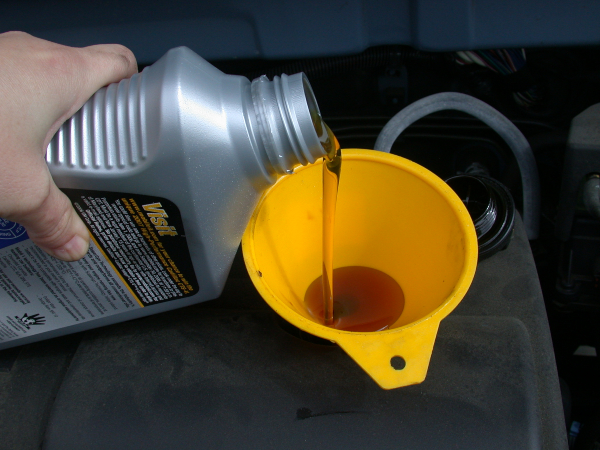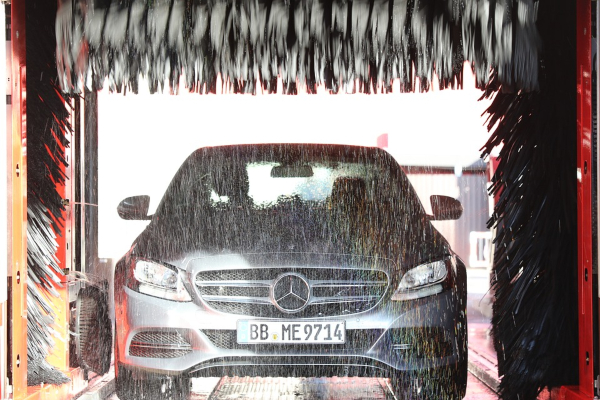11 Simple Winter Car Care Tips
Winter is synonymous with festivity for almost everyone in the world. So your car deserves that festive treatment too. Deck it up with the best coolants and snow tires out there! Or, just do it so that you can enjoy the regular comforts of your car without any hassles. The holiday season calls for giving your car a winter edition mini-upgrade.
Make sure that all the fluids within it can stay liquid even at bone-chilling temperatures. And your car is strong enough to fight back in case of yet another blizzard. That means taking care of its tires, windshield, battery, and windows among other stuff.
11 Winter Car Care Tips
Below we have mentioned the various tips you can use to upkeep your car this winter season.
1. Wiper Blades Replacement
Start with a clear view and try to maintain it that way. You need a good set of wiper blades for it. And they need to be replaced every 6 months. This is the maximum time they can serve without starting to miss spots and give a faulty performance altogether.
You might try to stretch their life by cleaning them a bit too close or getting the best washer fluid out there. But that will not change the fact that it is time to retire the current pair of blades. You might even get a sweet deal and get them installed free of cost if you buy them from certain auto parts shop.
Though, you still need to clean them with paper towels and the glass with proper glass cleaner every other week. Otherwise, the dust and gunk particles will settle onto your windshield for good. The winters come with fog, snow and several other obstacles to proper visibility. Brand new wiper blades will help you greatly while dealing with these problems.
2. Oil Monitoring
The cold might cause motor oil to thicken. This means that you need to get a different oil blend designed especially for the winter season. It is known as the multi-viscosity oil. You will recognize it with the signature “W” in its viscosity index.
The recommended oil formulas suitable for the modern engines are the 5W-20, 5W-30, and 10W-30. They can be used year-round too. However, it will prove the most helpful during the winter season. This oil blend remains at the usable viscosity even during peak winter months.

Get your oil filters replaced and the hoses for the radiators and heaters checked during each servicing in winters. This will let you know if the brittle hoses need to be repaired or replaced. They need to be flexible and firm enough for letting the fuel pass easily through them. They may get contaminated by the grease and oil in case of negligent use.
3. Right Coolant
The coolant/antifreeze regulates the temperature of the engine. In the winters, it will prevent your car from freezing up if you use it in the right manner. The best coolant to water ratio is 50/50. This way it can be of service till the outside temperature drops well below zero.
You can go as far as the 60/40 to 70/30 ratio. If you go beyond this point then you would lose out on the extended freezing point range of water. And that will work against you in the winter season. Read the car’s manual to locate the most suitable coolant for it.
The three main types of antifreeze are Inorganic Acid Technology (IAT), Organic Acid Technology (OAT) and Hybrid Organic Acid Technology (HOAT). The HOAT lasts for upto 150,000 miles and comes fortified with the phosphates and silicates. You can ask for the manufacturer directly to suggest the best type of coolant for your vehicle’s requirements.
4. Tire Upgrade
Your tires should match the area you are driving in on a daily basis. Don’t let a near-death incident be the sign that you need to replace your tires like yesterday. Also, get them replaced all at once. This way you will be able to achieve optimum performance. Otherwise, the new tire will be forced to pick up the slack of the old tires and deteriorate at a much faster speed.
The winter tires offer unbeatable grip, tread patterns and specialized rubber compound that enhances its winter-resistant features. They might need to be replaced at a much faster speed as their all-season counterparts. But, it’s well worth your life and safety. They may also make slightly higher sound comparatively.

Your car comes with the all-season tires. They are best if you don’t get much snow in your region. Make sure to check their tire pressure around the winters as the temperature drop causes a proportional drop in the tire pressure too. Check out how your current tires have performed in the standard ice-breaking and snow traction tests.
5. The Battery in Good State
A dead battery leaves you frantically trying to jumpstart your car in the middle of a snowstorm. Don’t let it come to that. Your battery can either be discharged, worn out or damaged. Get it replaced immediately for the winters if it is defective or worn out. You don’t want to gamble with these odds.
However, a discharged battery can easily be recharged at a service station. If it is over 5 years old then get it checked before you decide to invest more in it. Chances are that it has reached the end of its good performance stage and might start to falter any day now.
The cranking power of your battery drops by half as the temperature hits 0° F. It is running at its full power at around 80° F. You can add some distilled water in your conventional car battery to fix its performance a bit. The maintenance-free batteries have a window that indicates the battery level. You need to drive it out to the service station for getting this kind of battery charged fully.
6. Heaters
One of the best feelings in the world is getting in your warm car on an especially freezing day. This might get over real soon if you have a faulty heater. You can’t get it fixed until the next morning now. So you just drive in almost silence as your teeth chatter to make up for the useless heater now.
You can easily avoid this situation by getting your car’s heaters examined at the start of the season. The heater is also connected to the windshield’s defrosting system. You have twice as many urgent reasons to get it properly inspected and fixed well before the snow season begins.
It is better to go with a model that can heat up the entire space quickly and maintain that temperature. The energy-efficiency will really help you out since you will be using them a lot during those chilly days that seem to be as long as the day. Look for stainless material that is light and durable.
7. Radiators
The radiator keeps the fuel running smoothly within your car. But only till it is in good condition. If you have not maintained it well then it might cause havoc. It might crack or the tubes might start leaking that may contaminate the transmission line. This, in turn, can cause damage to your engine and ultimately your car.
The radiator tank needs to be examined every few months. This is to prevent those mini holes on its surface from being gaping crates that might render the entire radiator useless. The reservoirs can be repaired fully if all the dents and punctures are fixed on time.
You need to follow basic precautions to fix this situation. Make it a habit to check the car fluid levels during every few commutes and fix the proportions. Add the right blend of coolant/antifreeze upto the suggested levels. Get the caps and hoses of the radiator checked routinely to fix any small scale damage right at the source.
8. Emergency Kit
Emergencies are what we need to prepare for hoping that it never comes to that. But just in case, keep an emergency kit customized for you in your car. It can contain all the essential items that you might need in an emergency when you are in a condition that you might have to spend the night in your car.
It happens a lot in winters as the cars get snowed in and you don’t want to catch hypothermia by walking to the nearest gas station mirage on foot. Your standard emergency kit will have energy bars, other non-perishable food items, salt, water bottles, thick blanket, sand, flashlight, jumper cables, shovel, and a fully charged power bank.
Keep your mobile fully charged before you begin the drive to be on the safer side. You might need to call someone for help or contact the nearest authorities in case of serious situations. Winters are not a forgiving season. Just a night out stranded in cold can be fatal if you are not fully prepared.
9. Car Wash
The winters can be detrimental to your car if you don’t pay attention. You can slack a bit the rest of the year but winters ask for immediate action failing which you will get quick troubles too. The windshield, tires, front grill, engine, radiator – everything takes a bit hit with the drop in temperature.

You need to make extra effort to keep them safe and running well. Start with washing your car almost every week. This will keep the deposit at bay. And you will get a good look at your car to fix all its current problems. All the snow, salt, sand, hail and dust snowballs into the giant mess that hits your car from every corner on your commute.
One of the best ways to safeguard your car for winters is to get it professionally serviced and waxed right before the winter season. This way your car will get a fighting chance against the cold. Get the interiors well examined also to replace or repair them before the season gets chilling!
10. Clear Visibility Through the Windows
The snowfall overnight can wrap your entire car in a snow blanket. So, if you just get inside and decide to drive then you will have to play Russian roulette with your life and the people around you. Don’t let it come to that. Keep the wipers in an upright position as soon as you get out of the car.
This will prevent it from freezing into the windshield. Keep the windshield washer blended well with a coolant to function well on a daily basis. You will be needing it on almost a daily basis during the freezing winter months.
Make sure the radiator works just right to facilitate defrosting of the snow sheet on the windshield in the morning. The car heater and air conditioning system can help you keep the screen from fogging up. You just need to be a bit more prepared. And make sure that you at least have a clear view through the windows before every commute.
11. Starting Your Car Right
Your car is not an oven. So, opposed to the popular belief, you don’t need to preheat it for its fluids to get in the liquid and working condition before you actually get in and drive off. Even in winters. Just start it as you normally would and drive off.
Unless there is a problem. In that case, give it a few minutes and get going. It is not a rule of thumb that you need to start your car a while back to warm up the engine. You might need to make sure that you take it out or start at least once a week.
This way you will be able to keep the fluids within the car in motion. Or, get to know about a recently surfaced car trouble so that it is in a useful state when you actually need to go out. This applies to all seasons as you need to use your vehicle once in a while to keep it intact as a well-oiled machine.
All these tips mentioned above can really help you get through this winter season without a scratch!
Conclusion
The winters are the best time to stay in and get into the festive spirit. But it can be equally fun to drive around and make your mark on that freshly fallen snow. Only, if you have prepared well in advance. You should not let the weather dictate your schedule and commutes. Make good use of your car in winter by following the above-mentioned tips. And stay safe and sound till the New Year and beyond.
Do you hate driving in winters? Did you ever get into an accident due to your negligence? Tell us all in the comments section below. And while you are at it, forward it to your friends to prepare them for this winter season.








